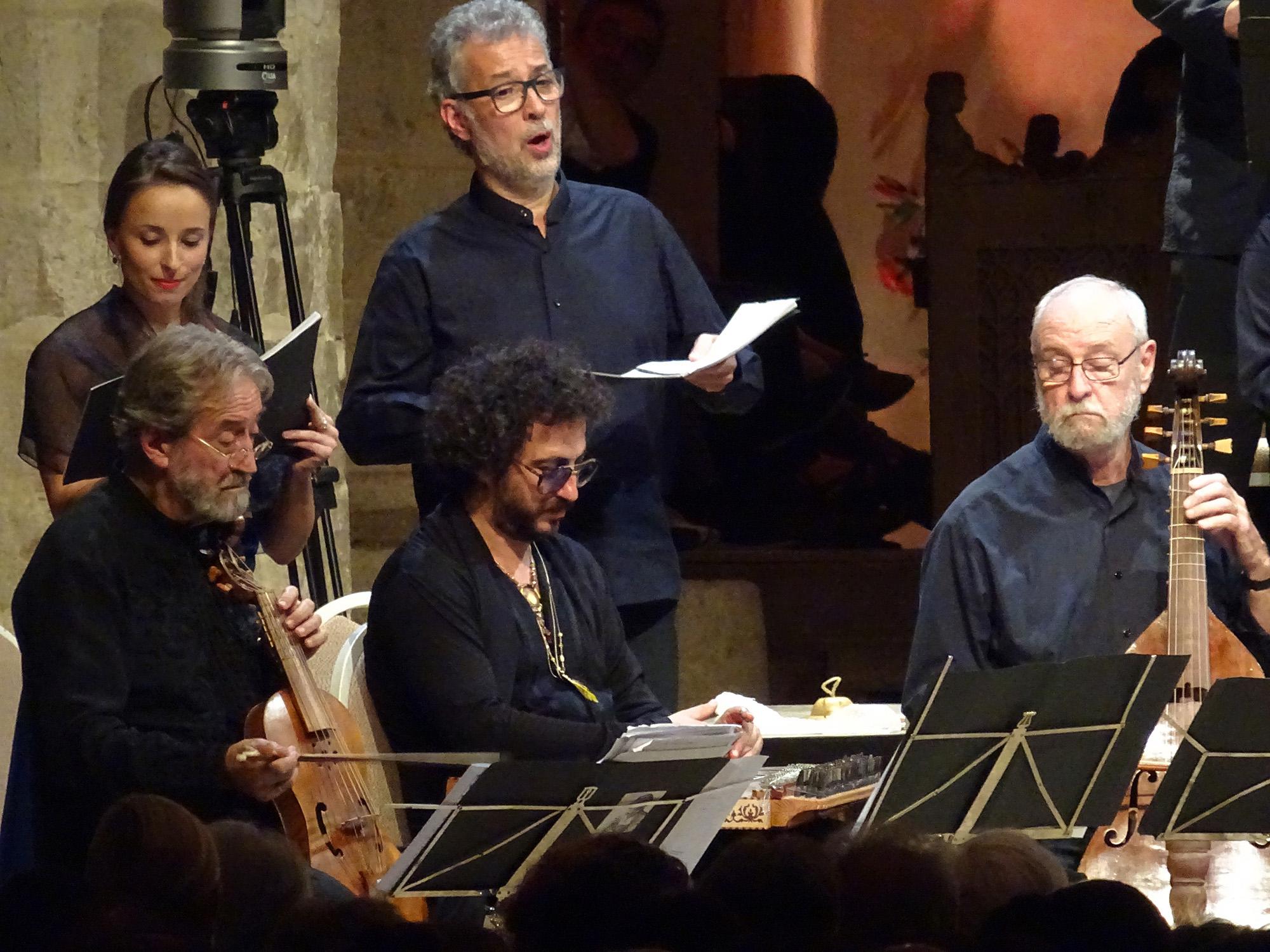Consone Quartet
70:41
Editions Ambronay AMY 310
Haydn in G, op. 77/1; Mendelssohn in Eb, op. 12 & Four Pieces, op. 81
[dropcap]I[/dropcap] first encountered the period instrument Consone Quartet, all of whom are former students at the Royal Academy of Music, at Ambronay in 2016. At that time they appeared competitively as part of the Eeemerging project for young musicians. Following that short concert, I wrote that their playing of Haydn’s late op. 77/1 String Quartet ‘showed considerable promise but would eventually benefit from the quartet’s own developing maturity’. Would that my prophetic words were always as satisfyingly fulfilled as they are by this splendid recording, made some 18 months later in the spring of 2018. For here is a performance in which maturity and technical excellence have merged to provide one of the most rewarding performances I have heard of this wonderful product of Haydn’s ageless old age. One of the remarkable features of all the performances here is the near-perfect balance, whether achieved as a result of the players facing each other in the square formation shown in the booklet photo or for some other reason I don’t know. But it is so, revealing part writing in a clear, yet warm ambiance for which the recording engineer also deserves the greatest credit.
A further mark of growing maturity can be found in the freedom the players have come to allow themselves in the use of rubato and touches of expressive portamento, the latter particularly effective in the gentle affection they bring to the youthful, yet understated romanticism of the opening movement of Mendelssohn’s early E flat Quartet, op. 12 (1829). This and sometimes bold decisions regarding contrasts of dynamics and tempo are a dangerous course if the results sound contrived or simply imposed, but here they invariably seem to stem from the players’ collective inner thoughts and feelings. Also admirable is the light, buoyant touch and perfect chording the Consones bring to the Canzonetta: Allegretto of op. 12, the quartet’s scherzo and trio. Here, at the ripe old age of 20, are reminiscences of those teenage miracles, the string Octet and the Midsummer Night’s Dream overture. And should you still doubt that Mendelssohn wrote nearly all his best music before he was out of short trousers, the Four Pieces published posthumously as op. 81 after the composer’s death provide further evidence. They date from across his career, the best being a veiled Fuga constructed of magical filigree strands of aural thread written just after the completion of the op 13 String Quartet in A minor in 1827. There is a Scherzo, too, dating from much later (1847) and a poor relation of those gossamer-like pieces mentioned above.
Finally, we must briefly return to the Haydn and a performance that has grown so immeasurably since I first heard it. Now the opening Allegro sets out with a deliciously jaunty but never rushed step, the counterpoint of the second idea in the development exposed with revelatory clarity. The following Adagio, one of the most profound of Haydn’s quartet movements, is graced especially by the exquisitely played solo arabesques and roulades of first violinist Agate Daraskaite. Both Menuetto and the final presto bubble over with spirit, good humour and poignant reminders of the old man’s humble peasant beginnings. ‘Old man? Age is just a figure’, Haydn seems to be saying in this infectiously joyous playing. The last word goes to Marc Vignal’s notes, a model of what such things should be. A well deserved – and from me rare – five stars all round.
Brian Robins
[iframe style=”width:120px;height:240px;” marginwidth=”0″ marginheight=”0″ scrolling=”no” frameborder=”0″ src=”//ws-eu.amazon-adsystem.com/widgets/q?ServiceVersion=20070822&OneJS=1&Operation=GetAdHtml&MarketPlace=GB&source=ss&ref=as_ss_li_til&ad_type=product_link&tracking_id=infocentral-21&language=en_GB&marketplace=amazon®ion=GB&placement=B07GWGL7FX&asins=B07GWGL7FX&linkId=12cda7493a08783ba66b02fd3fab49e1&show_border=true&link_opens_in_new_window=true”]
[iframe style=”width:120px;height:240px;” marginwidth=”0″ marginheight=”0″ scrolling=”no” frameborder=”0″ src=”//ws-eu.amazon-adsystem.com/widgets/q?ServiceVersion=20070822&OneJS=1&Operation=GetAdHtml&MarketPlace=DE&source=ss&ref=as_ss_li_til&ad_type=product_link&tracking_id=earlymusicrev-21&language=de_DE&marketplace=amazon®ion=DE&placement=B07GWGL7FX&asins=B07GWGL7FX&linkId=3d2f16cd4448085c804d5d0631128306&show_border=true&link_opens_in_new_window=true”]
[iframe style=”width:120px;height:240px;” marginwidth=”0″ marginheight=”0″ scrolling=”no” frameborder=”0″ src=”//ws-na.amazon-adsystem.com/widgets/q?ServiceVersion=20070822&OneJS=1&Operation=GetAdHtml&MarketPlace=US&source=ss&ref=as_ss_li_til&ad_type=product_link&tracking_id=earlymusicrev-20&language=en_US&marketplace=amazon®ion=US&placement=B07GWGL7FX&asins=B07GWGL7FX&linkId=a84d01ec2340b0d56d75aa93b8ec2f72&show_border=true&link_opens_in_new_window=true”]
This site can only survive if users click through the links and buy the products reviewed.
We receive no advertising income or any other sort of financial support.
As an Amazon Associate I earn from qualifying purchases.
Amazon and the Amazon logo are trademarks of Amazon.com, Inc. or its affiliates.





